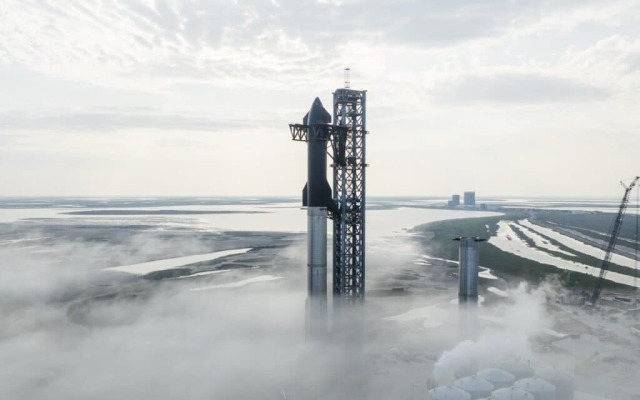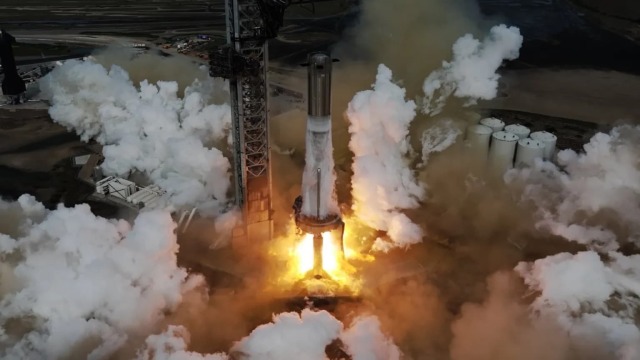The US Department of Defense considers it appropriate to use SpaceX's Starship heavy transport system, which was originally developed for flights to the Moon and Mars, as a fast "deliverer" of military cargo anywhere in the world. This was told by the military at a conference on space mobility held by the Space Forces in Orlando in early February. If the carrier is ready in the near future, its first test "military flight" may take place as early as 2026.
The American Space Force has a program called Rocket Cargo . The US Air Force Research Laboratory is responsible for its implementation. The main goal of the program is to find ways to deliver military supplies anywhere in the world in less than an hour. The military is looking for systems that could deliver cargo to a given point, no less in weight than those carried by the C-17 Globemaster III military transport aircraft (78 tons).
As such devices, Americans consider heavy reusable carriers capable of performing the task in any conditions. The only one who currently has missiles that meet the requirements of the Pentagon is Elon Musk. More precisely, his company is SpaceX.
In 2022, the U.S. Air Force and SpaceX signed a five-year, $102 million contract to "demonstrate technologies and capabilities for transporting military supplies and humanitarian aid around the world through a heavy rocket."
We are talking about a reusable two-stage Starship system consisting of a super Heavy launch vehicle and a Starship spacecraft. However, it is not ready for February 2024. A third test flight is planned at the end of the month, the previous two ended in failure.
Of course, the contract does not imply the full implementation of such an ambitious project, but only a demonstration of the fundamental possibility of delivery.
"The main purpose of the agreement between the government and industry is to find out exactly what can be achieved with a rocket when using it as a cargo transport: what is its actual capacity, speed and final price?" explained Gregory Spanjers, senior researcher at the US Air Force Research Laboratory.
Why Starship? Elon Musk has long said that, in addition to the economical delivery of goods and people to low Earth orbit, the Moon and Mars, this system can be used as an alternative to airliners. Starship was created taking into account the fact that it will be able to "transform" into a suborbital hypersonic vessel for transporting passengers between different cities of the Earth.
That's what the American military needs. Indeed, as part of their Rocket Cargo program, they plan to use a carrier to dump containers that must survive re-entry into the atmosphere and at the same time land at a given point.
 |
| The multi-functional, fully reusable two-stage system being developed by SpaceX consists of a super Heavy launch vehicle and a Starship spacecraft. |
| Source: SpaceX |
However, before proceeding with the implementation of the plan, the US Department of Defense needs to resolve with SpaceX the issue of reducing the launch cost — this is the main problem. Elon Musk said that two to three years after the start of production of Starship, the cost of launching it into low Earth orbit will be less than $ 10 million. It is clear that in the "airliner" mode, this price will be lower, but it still remains impressive and will fall on the shoulders of the military with an additional burden.
In early February, a conference on space mobility was held in Orlando, which was held by the Space Forces. At this conference, the military announced that they are determined to use the SpaceX transport system and, to test its capabilities, mock-ups of the Starship cargo compartment have already been created.
If SpaceX prepares the system in the near future and it successfully passes all tests, the first test "military flight" may take place in two years.
The possibility of delivering military supplies, as well as marines, to the battlefield and to the theater of operations at the expense of missiles in the United States began to be studied back in the 1960s. At that time, the Douglas Ithacus T-100 carrier was being developed for these purposes. It was assumed that the estimated speed of the rocket would be 27 thousand kilometers per hour. Thus, soldiers could start performing combat missions anywhere in the world within 45-50 minutes after starting from their base.
Due to technical reasons, the project was too difficult to implement, and they decided to abandon it. Despite a number of advantages, it had a lot of disadvantages. The main thing is the complexity of the design, which did not allow even a workable prototype to be built.

